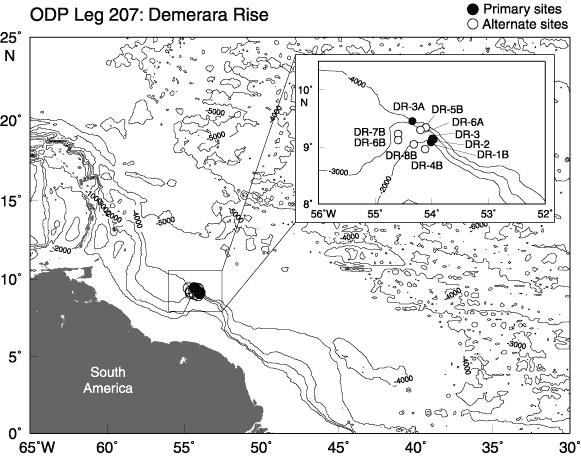Leg 207
Demerara Rise
The best examples in the geologic record of rapid wholesale extinctions linked to massive perturbations of the global carbon cycle and extreme changes in Earth’s climate come from the Cretaceous and Paleogene (e.g., oceanic anoxic events in the Cretaceous and the Paleogene and the late Paleogene Thermal Maximum). Leg 207 will address these topics by drilling a paleoceanographic transect on the Demerara Rise (Surinam margin, W. Atlantic). The Demerara Rise represents an ideal target to investigate rapid climate change and mass extinctions in the Cretaceous and Paleogene because the target sediments (i) crop out on the seafloor, (ii) exist with good stratigraphic control in expanded unlithified sections, (iii) contain extremely well-preserved microfossils and (iv) were deposited within the core of the tropics in a proximal location to the equatorial Atlantic gateway.
Ten sites located on the northern margin of Demerara Rise are proposed, of which four are primary sites. The sites are located on a depth transect ranging from 1735 m to 3320 m and have target penetrations between 250 and 800 mbsf. It is expected to drill Miocene to Aptian pelagic oozes, carbonaceous clays and shales, and chalk. The present operational plan calls for the sites to be triple APC cored to refusal and, at two of the sites, a fourth hole will be drilled to XCB refusal and RCB cored to targeted penetration. The three deeper sites will be logged.
Download the Leg 207 site map in PDF format.

